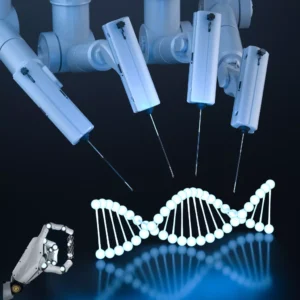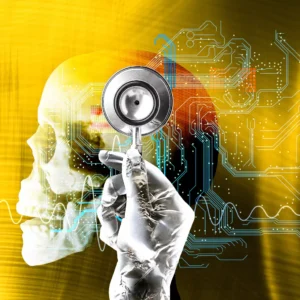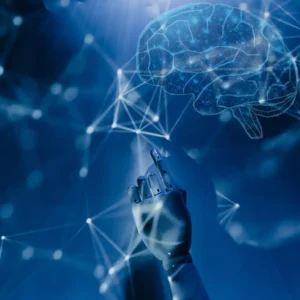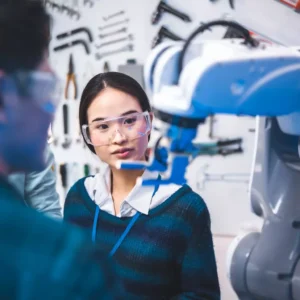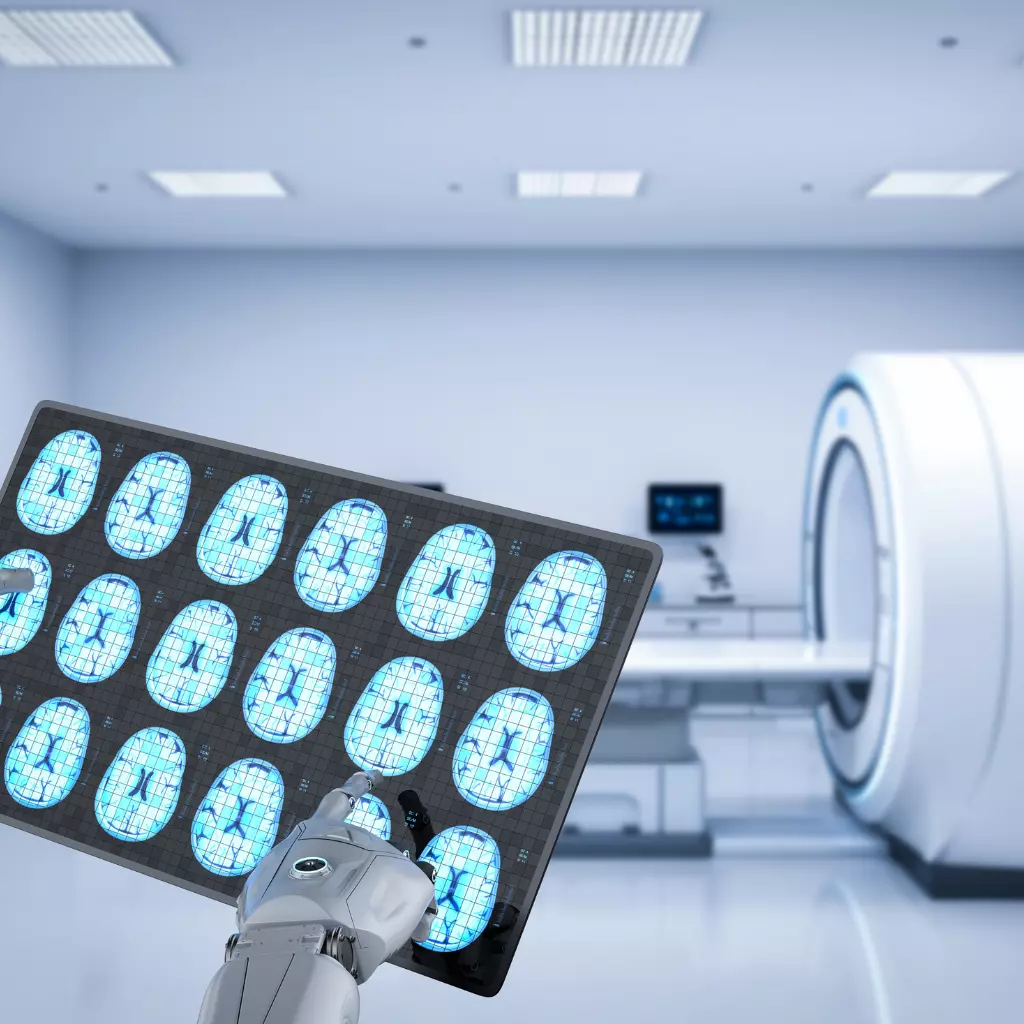
Transforming Medical Imaging with AI Capabilities
AI in radiology
Medical imaging stands at the crossroads of innovation and tradition. With the relentless advancement of technology, especially the integration of AI in radiology, the way we perceive, analyze, and interpret medical images is dramatically transforming.
Imagine a world where deep learning sharpens blurry scans, predicting disease progression isn’t a gamble but a science, and where diagnostic errors become a rarity.
This isn’t just the stuff of science fiction; it’s the reality we’re steering towards. As we delve deeper, we’ll show how AI aids in automating routine tasks, assists surgeons with meticulous planning, and even redefines radiologist training.
Yet, with great power come pertinent concerns. Join us on this journey, navigating the vast ocean of AI’s potential in medical imaging, as we spotlight innovative tools and discuss the ethical intricacies of this digital renaissance.
Table of Contents
Role of AI in modern radiology
Radiology, traditionally reliant on human expertise, has witnessed a groundbreaking transformation with the advent of AI in radiology.
The main attraction is the improvement in accuracy and efficiency algorithms, trained on vast datasets, now identify patterns and abnormalities often imperceptible to the human eye. These algorithms aren’t just for diagnosing; they’re actively involved in treatment planning and patient monitoring, revolutionizing patient care.
Moreover, AI-powered tools have brought about a significant reduction in reading times, leading to faster diagnoses. This isn’t to say that the radiologist’s role diminishes; instead, it evolves.
With AI handling routine scans and flagging potential concerns, radiologists can focus more on complex cases, collaborative care, and patient interactions. AI in radiology is not about replacement but empowerment, marrying machine precision with human intuition.
This collaboration ensures that patients receive the best care possible, harnessing the strengths of both worlds. Today’s radiology landscape, shaped by AI innovations, promises a future where diagnostics are quicker, treatments more personalized, and medical outcomes significantly improved.
Deep learning techniques for image enhancement
In the sphere of medical imaging, clarity can make all the difference. Enter deep learning for image analysis. This subset of AI in radiology utilizes neural networks to enhance image resolution and clarity, mimicking the human brain. The algorithms are trained on vast data sets to recognize even the most minor details in medical images.
For instance, deep learning models can enhance the visibility of subtle tumours or minute fractures that may otherwise escape detection. Beyond clarity, these techniques also reduce noise, a persistent challenge in medical imaging.
By distinguishing between essential features and background noise, AI-driven image enhancement ensures radiologists receive sharper and cleaner images. This doesn’t just elevate diagnostic precision but also boosts decision-making confidence.
Thanks to deep learning enhancements, imagine a world where blurry and grainy photos no longer pose diagnostic challenges. As we stride forward, the fusion of AI in radiology with deep learning techniques signifies a pivotal shift, crafting clearer, more informative, and actionable images.
Preoperative planning with AI assistance
Surgery, an intricate dance of precision and expertise, stands to benefit immensely from AI in radiology. One pivotal area witnessing transformation is preoperative planning. Integrating AI-assisted surgical planning tools offers a blend of predictive analysis and precision imaging, empowering surgeons with deeper insights.
Consider the challenge of predicting anatomical variations or potential complications. Traditional methods, while compelling, might miss out on nuances. Enter AI. AI models can anticipate unique patient-specific challenges by analyzing countless radiological images, ensuring surgeons are missed off-guard mid-procedure. Such foresight enhances surgical success rates and reduces post-operative complications.
Additionally, AI in radiology provides enhanced visualization. Think of it as a high-definition map for surgeons. Complex structures, vascular networks, or tumours are rendered with heightened clarity, allowing meticulous planning down to the minutest detail.
Lastly, AI-assisted tools streamline the planning process, integrating various data points – from scans to patient histories – and crafting a comprehensive surgical blueprint. This holistic approach optimizes surgical strategies and significantly reduces preparation time.
In the grand surgery theatre, AI’s role in preoperative planning is akin to a guiding light. Illuminating potential challenges and offering crystal-clear imagery ensures that every surgical intervention is informed and precise.
Disease prediction and monitoring
Harnessing AI in radiology is akin to equipping physicians with a crystal ball, providing a clearer outlook on disease trajectories. At the heart of this evolution lies predicting disease progression. AI models are trained to forecast potential disease pathways by utilizing vast data repositories, enabling proactive interventions.
Instead of simply diagnosing, radiologists powered by AI can anticipate the course a disease might take. This is monumental in conditions like cancer, where early intervention can drastically alter patient outcomes.
However, the marvels of AI in medical imaging continue beyond prediction. Seamless disease monitoring is another feather in AI’s cap. Traditional monitoring often requires many tests and scans, interpreted over extended periods. AI streamlines this, tracking disease markers and changes in real-time, offering instantaneous feedback. This rapid assessment means more timely treatment adjustments, tailoring care to each patient’s unique needs.
The convergence of AI and radiology transforms the paradigm from reactive to proactive. Radiologists aren’t just interpreting images; they’re leveraging AI to predict and monitor diseases, ensuring patients remain ahead in their health journeys. The promise? A healthcare landscape where interventions are timely, treatments are personalized, and outcomes are optimized.
Radiologist training for the digital age
The sweeping wave of AI in radiology isn’t just transforming diagnostics and patient care; it’s reshaping the foundation of radiologist training. As we usher into the digital age, radiologists are no longer merely interpreters of images; they’re becoming adept digital clinicians, synergizing with AI.
The training curriculum is witnessing a metamorphosis, integrating modules on deep learning for image analysis and AI algorithm comprehension. This equips budding radiologists with the skills to utilize and critique AI-driven insights. It’s a delicate balance, ensuring they rely on AI without becoming over-dependent.
Moreover, radiologists are trained to tackle more complex diagnostic challenges with AI, automating routine tasks. Real-world scenarios, where AI and human intuition collaborate, form the crux of modern training simulations. This experiential learning approach cultivates an environment where technology and human expertise coalesce seamlessly.
Additionally, ethical considerations, especially concerns in AI-based medical imaging, are becoming paramount in training. Future radiologists are groomed as tech-savvy professionals and ethical guardians, ensuring AI’s potential is harnessed responsibly.
As AI in radiology continues its upward trajectory, radiologist training is evolving in tandem. Crafting a generation of radiologists ready for the digital age, they stand at the nexus of traditional expertise and cutting-edge technology.
Ethical and privacy considerations
As the integration of AI in radiology intensifies, so does the spotlight on ethical and privacy concerns. The merging of technology and healthcare walks a tightrope between innovation and patient confidentiality. With AI systems processing many patient images, the question arises: How do we protect sensitive data?
Privacy considerations are paramount. Radiological images, laden with personal information, demand robust protection mechanisms. Ensuring that AI-based medical imaging systems adhere to stringent data protection protocols, like de-identification, becomes essential. This guarantees that while AI learns from data, individual patient identities remain shielded.
Beyond privacy, there’s the ethical quandary of decision-making. While AI in radiology offers unparalleled precision, the potential for errors exists. Who bears the responsibility in such scenarios? Radiologists? Developers? The delineation of accountability in AI-assisted diagnostics remains a hotbed for discussion.
Furthermore, ensuring AI systems are unbiased and equitable is crucial. Training AI on diverse datasets avoids potential biases in disease detection across different patient demographics.
In conclusion, while the benefits of AI in radiology are myriad, treading with ethical vigilance is imperative. Balancing the scales of innovation and ethical considerations, the medical community stands at a crossroads, ready to usher in an era where technology serves humanity with both care and caution.
Spotlight on top AI imaging tools
The realm of AI in radiology is bustling with innovation, and several trailblazing tools are capturing the limelight. These pioneering solutions are setting benchmarks, revolutionizing both diagnostics and patient care. Let’s spotlight a few game-changers.
Firstly, tools harnessing deep learning for image analysis have recently risen. They excel in detecting intricate patterns, often invisible to the human eye. These tools refine their accuracy by sifting through multiple images, becoming indispensable assets in early disease detection.
Next, there’s a surge in solutions dedicated to enhancing image clarity with AI. These tools improve visibility by analyzing and processing images intelligently, ensuring radiologists view the crispest, most detailed visuals. It’s like upgrading to high-definition in the world of medical imaging.
Furthermore, systems that excel in predicting disease progression are in the vanguard. By analyzing current and historical data, they chart potential disease trajectories, offering invaluable foresight to clinicians.
Last but not least, AI imaging tools focused on automating routine tasks in imaging are garnering attention. By handling repetitive chores, they free up radiologists to concentrate on intricate diagnostics.
In a nutshell, the landscape of AI in radiology is rich and diverse, with tools that aren’t just about better imaging but also about more innovative, efficient, and patient-centric care.
Future Potential of AI in Radiology
The trajectory of AI in radiology is nothing short of revolutionary. While we’ve witnessed groundbreaking advancements, the horizon promises even more. So, what does the future hold for this dynamic duo?
A significant potential lies in predictive diagnostics. Beyond just identifying existing ailments, future AI systems may predict vulnerabilities before they manifest. AI might forewarn the conditions patients are predisposed to by analyzing genetic, environmental, and historical data.
Enhancements in deep learning for image analysis will continue to be refined. We can anticipate AI tools that can discern even the subtlest of changes – possibly detecting diseases at their nascent stages when interventions are most effective.
Another avenue is personalized treatment plans. AI in radiology could tailor-fit treatments based on individual genetics, medical history, and other unique factors. This customization ensures that patients receive care most likely to succeed for their specific profile.
As AI tools are integrated, we may see real-time assistance during procedures. Imagine radiologists receiving instant AI-driven feedback during diagnostics, enhancing accuracy on the fly.
Lastly, with the explosion of telemedicine, AI can make remote diagnostics more robust, ensuring that even distant patients receive top-tier care.
In essence, the future of AI in radiology is a tapestry of promise, innovation, and elevated patient care. The synergy of man and machine is set to redefine the contours of medical imaging.
Conclusion
As we steer through the revolutionary trajectory of AI in radiology, it is evident that we stand at the cusp of a paradigm shift in healthcare. From deep learning for image analysis that delineates the most intricate details to automating the mundane, the transformation is profound, freeing professionals to focus on complex diagnostics.
Moreover, with AI-assisted surgical planning and predictive analytics at the helm, we are marching towards an era of preemptive medicine. An age where diagnostics are not just responsive but predictive, laying down paths for personalized, patient-centric healthcare solutions.
However, as we forge ahead, maintaining an ethical compass, respecting privacy, and ensuring inclusivity become paramount. The careful balance of innovation with responsibility will carve the successful path forward.
Indeed, the synergistic union of AI and radiology unfurls a tapestry of immense potential, promising improved healthcare and a future where preventive measures could reign supreme, fundamentally transforming our approach to health and wellbeing. It is not just a revolution but the beacon of a brighter, healthier future.
Related Articles
- AI in Telehealth: Revolutionizing Remote Care
- Navigating the Next: AI’s Role in Healthcare Predictive Analytics
- Transforming Medical Imaging with AI Capabilities in Radiology
- AI in Genetic Data Analysis: Personalizing Medicine
- AI in Diagnostics: A New Era of Precision and Accuracy
- Smart Hospitals: The Role of AI in hospital operations
- Mental Health Tech: AI-powered Mental Health Apps for Assessment and Therapy
- AI-Powered Drug Discovery: A Revolution in Pharma
- Medical Robots Enhanced by AI: Transforming Surgeries and Care
- Wearable Health Tech: AI-driven health wearables
- AI’s role in chronic disease management
- Neural Interfaces and AI: Bridging Minds and Machines
- Digital Health Platforms: The Power of AI Integration
- AI in Epidemiology: Predicting and Controlling Outbreaks
- AI in Rehabilitation: Personalized Recovery Pathways
- AI in Predictive and Preventive Care: A Proactive Approach
- AI in Home Healthcare: Personal Health Management
- Revolutionise Healthcare with IPA Tools: Streamlining Processes, Improving Efficiency, and Enhancing Patient Care
- Other Articles on AI Usage in Healthcare
- Other Articles on AI usage in different industries
Workflow automation and AI
In the fast-paced realm of radiology, efficiency is paramount. Integrating AI in radiology is not just about image analysis but also about transforming the operational flow. Powered by AI, workflow automation promises a streamlined, optimized, and less labour-intensive radiological process. From organizing patient schedules to prioritizing urgent scans, AI systems seamlessly orchestrate many tasks.
The beauty of AI-driven automation is its adaptability. It can identify regular bottlenecks reshuffling tasks to prevent hold-ups. Imagine a scenario where AI systems automatically sort and queue scans based on urgency or complexity, ensuring critical cases receive immediate attention. The result? Faster response times and enhanced patient care.
Moreover, mundane, repetitive tasks, often a source of human error, are prime candidates for automation. AI in radiology steps in here, reducing the manual workload and allowing radiologists to dedicate more time to patient interactions and complex decision-making.
In essence, the union of AI and workflow automation is a game-changer. It’s not merely about doing things faster but about doing them smarter. By offloading routine tasks and optimizing the flow, AI ensures that radiology departments are more responsive, adaptive, and patient-focused than ever before.
Addressing diagnostic errors
Errors in diagnostics aren’t just about statistics; they can profoundly impact lives. Thankfully, the integration of AI in radiology offers a beacon of hope. With its unparalleled pattern recognition capabilities, AI reduces areas prone to human oversight. Leveraging deep learning in image analysis allows AI systems to accurately detect subtle anomalies that may be missed during manual assessments.
Diagnostic inconsistencies often stem from fatigue, high caseloads, or inherent human subjectivity. AI in medical imaging counteracts these challenges. By consistently analyzing thousands of images, it maintains a consistent accuracy level, unhampered by fatigue or workload. This consistency aids in significantly reducing misdiagnoses, a pivotal step in patient safety and care.
Furthermore, AI tools can act as a second set of eyes. Instead of replacing radiologists, they complement their expertise. As the system flags potential concerns, radiologists can revisit specific images, ensuring that potential issues are noticed. This collaboration between man and machine fosters an environment of enhanced scrutiny.
In the evolving healthcare landscape, AI in radiology is more than just a technological marvel; it’s a lifeline. Addressing diagnostic errors head-on paves the way for more accurate, reliable, and patient-centric care.

Arindam Roy
An Automation Consultant with 25+ years of IT Experience
Forbes Articles related to AI usage in Healthcare:



